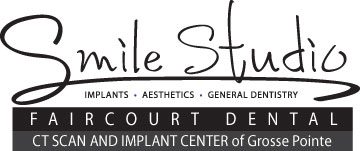
FAQs When Selecting a Dental Implant Dentist
answered by Dr. Mary Sue Stonisch
Q. How many dental implant procedures have you performed?
A. Literally hundreds.
Q. What’s your success rate?
A. 95%
Q. What’s your education and training in implant treatment?
A. I trained through the Engel Institute and credentialed with the International Congress of Oral Implantologists (ICOI) in which I have received a Diplomat status.
Q. Which technique* and type of replacement teeth or appliance do you recommend for me, and why?
A. I recommend the X-NAV technique which is a GPS-guided precision implant placement system. Faircourt Dental has been using this technology for 5 years and I was the first dentist in MI to implement this system.

DYNAMIC 3D NAVIGATION FOR MORE ACCURATE DENTAL IMPLANT SURGERY
X-Guide® is a revolutionary system that extends the capabilities of your cone beam system for simplified and more accurate implant procedures.
X-Guide boasts dynamic 3D navigation that delivers interactive, turn-by-turn guidance giving me the ability to improve the precision and accuracy of implant POSITION, ANGLE, and DEPTH.
Featuring the only live, 360-degree single-view of drill position and anatomy during surgery, X-Guide allows me to confidently transfer your 3D treatment plan to the patient, with ease. X-Guide also makes same-day guided surgery a reality for some patients – and at just a fraction of the cost of traditional guides.
Q. What steps are involved in the process and where and by whom are they performed?
A. Before implant placement, a thorough medical history needs to be taken into consideration. The ability to heal from a cellular level is imperative with dental implants. If you are a diabetic, a smoker, have gum disease, or an autoimmune condition, you may be a poor candidate for dental implants. Be forthcoming with your medical health history when speaking with your dentist. Once you have been pre-screened a CAT SCAN will aid in verifying nerve placement, bone quality, and availability as well as sinus locations. There must be ample, supple bone for implant placement.
Once contraindications are ruled out, a treatment plan can be fabricated and implemented. With the proper training, a general dentist may be extremely qualified to place your dental implant. The benefit is that the general dentist will be the one typically completing the crown(s) or other restorations that will be supported by the implant(s) and ultimately create your new smile.
Q. What should I expect throughout the process in terms of pain, recovery time, eating, etc.?
A. Pain is typically minimal as bone does not have nerve endings in it. The recovery time is based on the bone quality and stability which is different in each case and should be discussed with your dentist. And of course, during the healing process, it is necessary to be extremely careful eating to minimize pressure on the implant and allow maximum healing.
Q. Will I have teeth throughout the process?
A. Each case is different and there are typically removable and fixed options for temporization. For a single implant in the back of your mouth, it is best to forego previsualization.
Q. What type of anesthesia do you use?
A. Local anesthesia is used in most cases and is usually all that is necessary for dental implant surgery.
Q. What are the risks of the treatment option you’re recommending?
A. There is always a risk of implant loss as well as paresthesia which is often temporary numbness. CAT SCANS are a great aid in identifying nerves and vessels as is the X-NAV technology to ensure success.
Q. What are the benefits?
A. Tooth loss can be very embarrassing. A beautiful smile can make a difference in your health and self-esteem! Do your homework and GO FOR IT!



